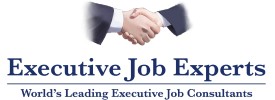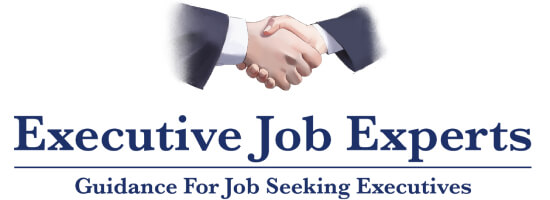When you reach the executive level, interviews shift from proving you’re qualified to proving you’re the right strategic fit. Employers want to see how you lead, make decisions, and align with their vision. Your answers need to show not just experience — but judgment, self-awareness, and influence.
Here are 10 common executive interview questions with examples of strong, effective answers. These are designed to help you prepare for C-suite, VP, or senior leadership interviews with clarity and confidence.
1. Tell me about your leadership style.
💬 Best answer:
“I lead by setting a clear vision and empowering the right people to own it. I believe in hiring smart, accountable leaders and creating a culture where people feel safe to speak up and take initiative. I stay close to the strategy and coach where needed, but I avoid micromanagement. Over time, my teams have consistently exceeded targets because they understand the ‘why’ behind the work.”
🎯 Why it works: Shows vision, trust in others, and a modern leadership mindset.
2. How do you handle difficult decisions with limited information?
💬 Best answer:
“I gather what I can quickly — internal data, input from key team members, and past patterns. Then I make a call based on risk, timing, and core values. I’d rather make a timely decision and course-correct later than delay progress. One example: during COVID supply chain disruptions, we had to choose between delaying a product launch or pivoting vendors. I chose to pivot — and we launched on time.”
🎯 Why it works: Balances decisiveness with thoughtful judgment. Provides a real, high-stakes example.
3. What’s a business transformation you’ve led?
💬 Best answer:
“At [Company], I led a shift from a product-first to a customer-first strategy. That meant restructuring marketing, retraining our sales team, and investing in user feedback. Over 18 months, we improved NPS by 42 points, increased retention by 27%, and shortened our sales cycle. It was a mindset shift, not just an operational one — and it changed how we measured success across departments.”
🎯 Why it works: Demonstrates strategic leadership, cross-functional execution, and real business outcomes.
4. How do you build and retain strong teams?
💬 Best answer:
“I focus on hiring for both skill and alignment with our culture. Once on board, I invest heavily in development, clarity, and feedback. I do regular skip-level meetings and use 360 reviews to ensure leaders are growing. One of my proudest moments was promoting 3 directors to VP within 2 years — all internal talent we developed.”
🎯 Why it works: Focuses on people development, succession planning, and culture — all top C-suite concerns.
5. Describe a time you failed. What did you learn?
💬 Best answer:
“In my first GM role, I underestimated how much alignment was needed before pushing a new pricing model. The rollout confused sales and strained customer relationships. I learned to slow down, communicate clearly, and involve cross-functional leaders earlier. It was a humbling but pivotal lesson in strategic change management.”
🎯 Why it works: Shows self-awareness, accountability, and growth — not defensiveness.
6. How do you manage stakeholders with conflicting priorities?
💬 Best answer:
“I start by understanding what’s truly important to each stakeholder — their KPIs, concerns, and constraints. Then I try to frame solutions in terms of shared goals. At one point, product wanted speed, and legal wanted risk mitigation. I facilitated a working group where both sides could find compromise. We launched 2 weeks later than planned, but with stronger compliance and fewer rework issues long-term.”
🎯 Why it works: Shows empathy, facilitation skill, and the ability to drive consensus without pleasing everyone.
7. How do you stay current and innovative in your industry?
💬 Best answer:
“I dedicate time weekly to reading industry research and engaging with thought leaders on platforms like LinkedIn and podcast interviews. I also run quarterly innovation labs with my teams to surface new ideas. At my last company, this led us to test AI-enabled analytics tools 6 months ahead of our competitors.”
🎯 Why it works: Shows proactive learning, initiative, and a culture of innovation — all crucial for C-suite roles.
8. Why are you leaving your current role?
💬 Best answer:
“I’ve accomplished what I set out to do — including growing revenue 3x and building a high-performing leadership bench. The company is in a strong place, and I’m ready for a new challenge that lets me scale something bigger or drive transformation in a different context.”
🎯 Why it works: Positive, forward-looking, and avoids negativity or personal drama.
9. What would your direct reports say about you?
💬 Best answer:
“They’d say I challenge them — but I always have their back. I set high expectations, but I make sure they have the resources and support to meet them. I think they’d also mention that I listen closely and act fast when it matters. During a recent change, several team members said they felt ‘heard and steady,’ which meant a lot.”
🎯 Why it works: Human, relatable, and demonstrates leadership without bragging.
10. What questions do you have for us?
💬 Best answer:
“What are the top 2 or 3 outcomes you want this person to deliver in the first 12 months?”
“How would you describe the leadership team’s communication and decision-making style?”
“What challenges do you think this role will face that aren’t obvious from the job description?”
🎯 Why it works: Asks strategic, insightful questions that show you’re thinking like a peer — not a job seeker.
Final Thoughts
At the executive level, interview answers must show more than competence. They must reflect emotional intelligence, business acumen, and authentic leadership. Use real stories. Be concise. Speak to both results and relationships.
The best way to prepare? Reflect honestly, practice intentionally, and refine how you tell your leadership story.

